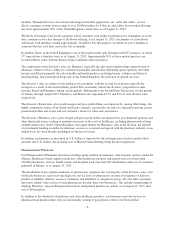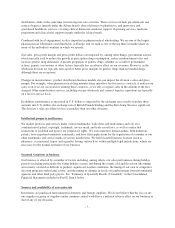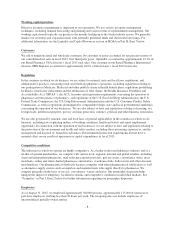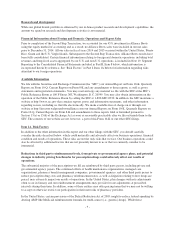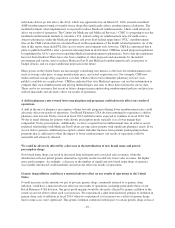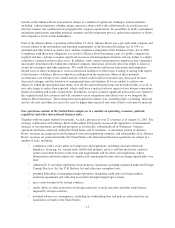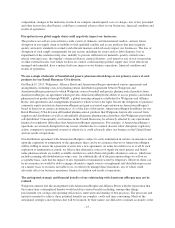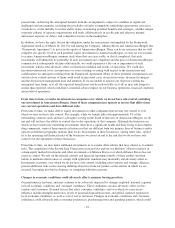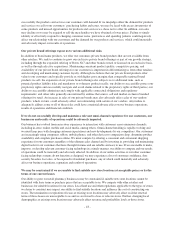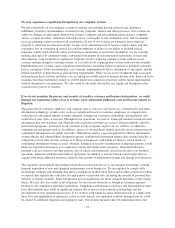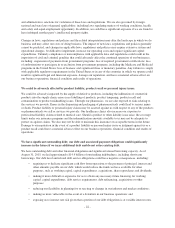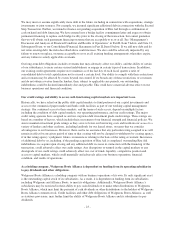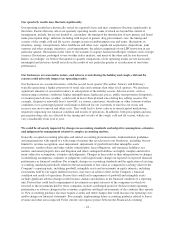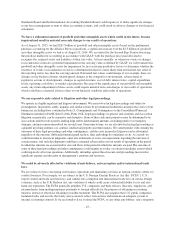Walgreens 2015 Annual Report Download - page 20
Download and view the complete annual report
Please find page 20 of the 2015 Walgreens annual report below. You can navigate through the pages in the report by either clicking on the pages listed below, or by using the keyword search tool below to find specific information within the annual report.present time. Achieving the anticipated benefits from the arrangement is subject to a number of significant
challenges and uncertainties, including the possibility of faulty assumptions underlying expectations, processes
or initiatives, or the inability to realize and/or delays in realizing potential benefits and synergies, whether unique
corporate cultures of separate organizations will work collaboratively in an efficient and effective manner,
unforeseen expenses or delays, and competitive factors in the marketplace.
In addition, we have the right, but not the obligation, under the transactions contemplated by the Framework
Agreement dated as of March 18, 2013 by and among the Company, Alliance Boots and AmerisourceBergen (the
“Framework Agreement”) to invest in the equity of AmerisourceBergen. There can be no assurance that we will
complete any specific level of such potential equity investments in AmerisourceBergen, or exercise our warrants
to acquire AmerisourceBergen common stock when they are exercisable, or that if completed, that such
investments will ultimately be profitable. If such investments are completed and the price of AmerisourceBergen
common stock subsequently declines substantially, we could experience a loss on or impairment of such
investment, which could adversely affect our financial condition and results of operations. We could also
encounter unforeseen costs, circumstances or issues existing or arising with respect to the transactions and
collaboration we anticipate resulting from the Framework Agreement. Many of these potential circumstances are
outside of our control and any of them could result in increased costs, decreased revenue, decreased synergies
and the diversion of management time and attention. If we are unable to achieve our objectives within the
anticipated time frame, or at all, the expected benefits may not be realized fully or at all, or may take longer to
realize than expected, which could have a material adverse impact on our business operations, financial condition
and results of operations.
From time to time, we make investments in companies over which we do not have sole control, including
our investment in AmerisourceBergen. Some of these companies may operate in sectors that differ from
our current operations and have different risks.
From time to time, we make debt or equity investments in other companies that we may not control or over
which we may not have sole control. For example, while we beneficially own approximately 5% of the
outstanding common stock and have a designee serving on the board of directors of AmerisourceBergen, we do
not and will not have the ability to control day-to-day operations of that company. Although the businesses in
which we have made non-controlling investments often have a significant health and daily living or prescription
drug component, some of them operate in businesses that are different from our primary lines of business and/or
operate in different geographic markets than we do. Investments in these businesses, among other risks, subject
us to the operating and financial risks of the businesses we invest in and to the risk that we do not have sole
control over the operations of these businesses.
From time to time, we may make additional investments in or acquire other entities that may subject us to similar
risks. The completion of the Second Step Transaction increased our and our stockholders’ effective interest in
certain equity method investments and other investments of Alliance Boots over which Alliance Boots does not
exercise control. We rely on the internal controls and financial reporting controls of these entities and their
failure to maintain effectiveness or comply with applicable standards may materially and adversely affect us.
Investments in entities over which we do not have sole control, including joint ventures and strategic alliances,
present additional risks such as having differing objectives from our partners or the entities in which we are
invested, becoming involved in disputes, or competing with those persons.
Changes in economic conditions could adversely affect consumer buying practices.
Our performance has been, and may continue to be, adversely impacted by changes in global, national, regional
or local economic conditions and consumer confidence. These conditions can also adversely affect our key
vendors and customers. External factors that affect consumer confidence and over which we exercise no
influence include unemployment rates, levels of personal disposable income, and global, national, regional or
local economic conditions, as well as acts of war or terrorism. Changes in economic conditions and consumer
confidence could adversely affect consumer preferences, purchasing power and spending patterns, which could
-16-


